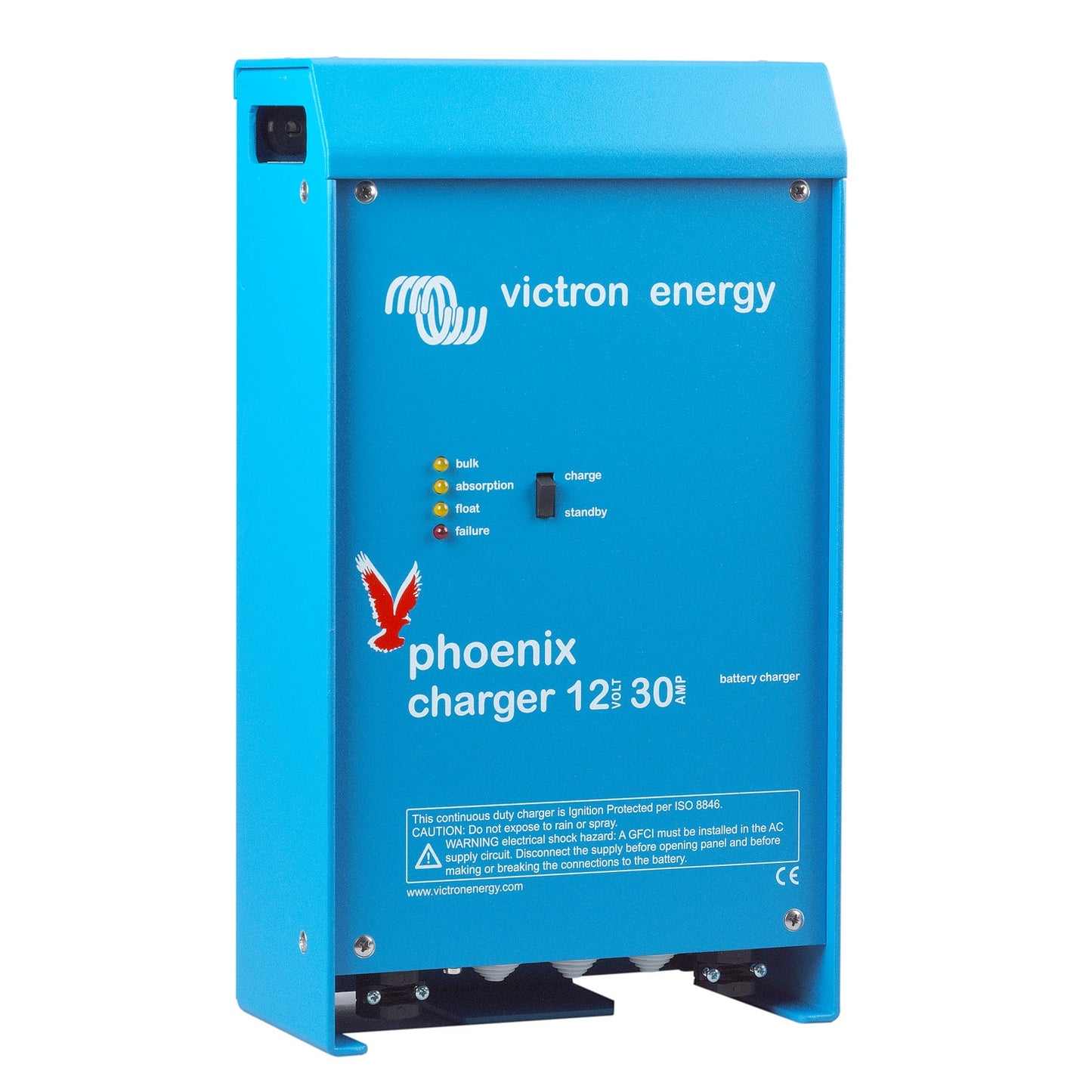Name: Victron Energy
Address: De Paal 35, NL 1351 JG Almere
Email: sales@victronenergy.com
European Manufacturer: Yes
MARITEC GMBH – YOUR WHOLESALE PARTNER FOR MARINE TECHNOLOGY
Welcome to our store

Phoenix Chargers
Adaptive four-stage charging characteristic: constant current (“bulk”) phase, constant voltage (“absorption”) phase, charge maintenance voltage (“float”) phase, storage voltage (“storage”) phase
The microprocessor-controlled 'adaptive' battery management system of the Phoenix charger can be adapted to different battery types. 'Adaptive' means that the charging characteristic is automatically adapted to the type of battery use.
The right amount of charge: adjusted constant voltage time
When the battery discharge is small (e.g. a yacht connected to shore power), a short constant voltage phase is selected to avoid overcharging. After a deep discharge, the constant voltage phase is automatically extended to ensure that the battery is fully charged.
Preventing damage caused by excessive gas development: the battery protection mode
To shorten the charging time, the highest possible charging current was selected together with a high constant voltage. However, to avoid excessive gassing towards the end of the constant current phase, the Phoenix charger limits the rate of voltage increase after the gassing voltage has been reached.
Less maintenance and aging when the battery is idle: storage mode
Storage mode is activated whenever no discharge has occurred within 24 hours. In storage mode, the float charge voltage is then reduced to 2.2 V/cell (13.2 V for a 12 V battery) to minimize gassing and corrosion of the positive plates. Once a week, the voltage is increased to the level of the gassing voltage. This creates a type of equalization charge that prevents electrolyte stratification and sulfation - the two main causes of premature battery failure.
To extend battery life: Temperature compensation
Every Phoenix charger comes with a temperature sensor. The temperature sensor ensures that the charging voltage decreases as the battery temperature increases. This is particularly important for gel batteries or when constant large temperature fluctuations are expected.
Battery voltage sensor
To compensate for voltage losses caused by cable resistance, the Phoenix charger has a voltage sensor in the charging circuit so that the battery always receives the correct charging current.
Universal 90-265 V AC input voltage range, also suitable for direct current supply (AC-DC and DC-DC operation).
The chargers accept a 90-400 V DC supply.
Computer interface
Every Phoenix charger can exchange information with a computer via its RS-485 data port. Together with our VEConfigure software, which can be downloaded free of charge from our website www.victronenergy.com, and the Data Link MK1b (see accessories), all of the charger's parameters can be individually configured.

Name: Victron Energy
Address: De Paal 35, NL 1351 JG Almere
Email: sales@victronenergy.com
European Manufacturer: Yes
